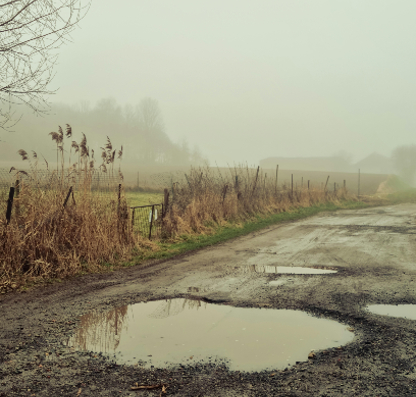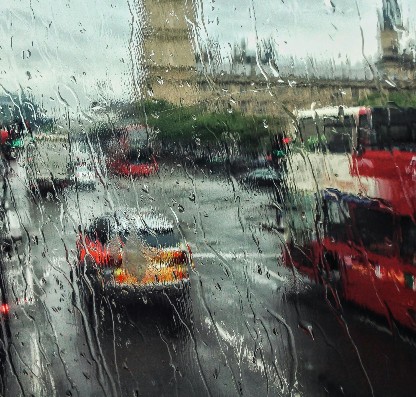Spring driving tips
Spring is always a refreshing change after cold, dark months of wind and rain. As the seasons shift towards longer, brighter days, it’s important to adapt both our cars and driving habits to suit the road and weather conditions that spring brings. Follow our spring driving tips to enjoy every second of those long-awaited road trips and days out with family and friends.
Watch out for potholes
Common in spring, potholes are the result of winter’s impact on road surfaces. Usually caused by the use of salt and sand on icy roads, potholes can grow particularly big - especially on older streets. If you see a pothole in the road ahead, slow down and avoid contact with the pothole wherever possible. If driving over the pothole is unavoidable, try not to brake too hard as this can cause tyre damage or even make them pop.
Driving over potholes can lead to the premature wear and tear of your car’s suspension, as well as damage to its chassis. Potholes can also be hidden by road debris or large puddles, so approach with caution and report potholes to your local council when you see them.


Drive slowly during rain showers
Early spring is known for heavy rain, which is great for gardening but not so good if you’re driving. Heavy rain showers can bring flooding, and water mixing with oil and grease on the road can result in slippery road surfaces. When the rain falls, switch on your headlights and stick to the middle of your lane. Keep your speed below the limit and be gentle on the brakes to stop your wheels from locking. Always make sure to increase the distance between you and the car in front in adverse weather conditions.
Avoid cruise control
Many modern cars feature cruise control as standard, which can be very useful on those long motorway journeys to the coast. Keep an eye on the clouds though, as cruise control isn’t recommended for use during wet weather. Driving with cruise control in the rain can reduce tyre traction even more on slippery roads. With this in mind, it’s best to turn it off, keep to speeds well below the limit, and drive to the conditions of the road.
Watch out for puddles
Roads can soon become waterlogged following a heavy spring shower. They may look harmless, but puddles in the road can be dangerous and lead to you losing control of your car. You never know what’s lurking below the surface of a puddle – it could have moved manhole covers, opened new potholes, or deepened existing ones. Not only that, driving through deep water can impair your brakes, affect visibility, and even cause hydroplaning. To stay safe, it’s important to slow down when driving through puddles and standing water. If you’re driving during or after spring rain, avoid outer lanes where possible - as this is where water will gather – and aim to drive in the tracks left by cars in front. A little car maintenance also goes a long way, so keep those tyres inflated at the correct pressure to ease the impact of rainwater on your drive.
Avoid flooded roads
Spring showers can sometimes go as far as causing localised flooding. If you’re travelling in these conditions, never be tempted to cross a flooded section of road – look for an alternative route instead. It’s a good idea to drive at lower speeds and maintain a safe following distance in flood-prone areas to keep control of your vehicle. We’ve said it once, but repetition won’t hurt - never use cruise control on wet roads.
Avoid hydroplaning
Along with puddles and flooding, rain brings the risk of hydroplaning to your spring drive. Drainage systems on some roads just aren’t up to the job, so it’s important to keep your focus on the road conditions yourself. Hydroplaning happens when your tyres meet more water than they can scatter, causing them to lose their grip with the road surface. This causes vehicles to glide and skid across the water, making it very difficult to brake - brake too hard, and you could lose control of your vehicle. To help lower the risk of hydroplaning, make sure your tyres have plenty of tread as this helps to displace that excess water.
You should also lower your speed and try to avoid harsh braking and sharp turns. Where you can, drive in the tracks of the vehicle ahead. If you find your car is hydroplaning, follow these steps:
- Take your foot off the accelerator
- Gently apply brakes
- Steer straight until your vehicle regains traction

Beware of glare
Just as rain can affect visibility when driving, sun glare can do the same. As we know, the sun can be particularly bright in spring and summer - especially in the morning and late afternoon. When driving in these conditions, make sure to use your sun visor and wear sunglasses as doing so reduces glare and increases visibility.
Sun glare paired with wet roads can be dangerous, so slow down and increase your stopping distance.
Replace wiper blades
Your car’s wiper blades may be worn out after working so hard during the colder months. As spring showers and heavy rain decrease visibility, it’s wise to check your wiper blades for wear and replace them if they’re not doing a good job of clearing your windscreen, or they’re leaving streaks on the glass.

Share the road
When the sun shines, more pedestrians, cyclists, and bikers will take to the road. Everyone deserves to use the roads and enjoy the weather safely. As a driver, you have a duty of care to those sharing the road with you. So, check your rearview and wing mirrors before turning, stopping, or proceeding. Slow down if a cyclist is turning in front of you and give them plenty of space when passing – especially if it’s raining or you’re navigating narrow roads or tight turns. Be especially careful to check your mirrors and blind spots when changing lanes
Remember to keep your eyes peeled for motorcycles – they can be more difficult to spot. Always check your mirrors, your blind spots and indicate before turning. Look twice when changing lanes and give motorcycles plenty of room.
Check your tyres
Winter can play havoc with your tyres, which is why spring is a great time to get them checked out. After prolonged use, tyres can lose their tread, resulting in a lack of traction. This could increase the likelihood of your car sliding or hydroplaning. The risk worsens in wet weather, so make sure to inspect your tyres closely before driving. Are they properly inflated? If the tyre pressure is too high, you can lose traction and stopping distance. If too low, tyres can overheat and possibly cause an accident. Properly inflated, your tyres can also reduce the risk of road hazards (including potholes) and offer greater all-round protection.
Beware of roadworks
To make use of the improved weather conditions, many roadwork schemes begin in spring. This means more obstacles and hazards may appear on the highways, including road workers, lane closures, and diversions. Take note of any closures or detours and remember that they may change daily. Keep an eye on road signs and make sure to slow down in roadworks.
When driving through roadworks, aim to merge well in advance of a lane closure and always increase your following distance. You should also change lanes carefully and check your blind spots with each manoeuvre.

Be alert for animals
Spring brings new beginnings and encourages wildlife to come out of hibernation. Many animals are active early in the morning or late at night, so make sure to keep an eye out for them. It helps to slow down in rural areas and where animal numbers are high. Be on the lookout for birds, rabbits, deer, and many other animals which may attempt to land on or cross our roads. If the road is winding, make sure to approach bends carefully as you never know what might be around the corner.
Car insurance through Swinton
If your car insurance is due in spring, tick it off your To Do list with a policy through Swinton Insurance.